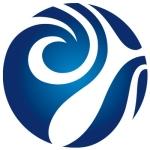Vital areas of New Zealand's seafloor to be revealed in detail for the first time
New Zealand’s largest research vessel Tangaroa sets off today to map, in high resolution detail, the southern Hikurangi Margin - a vital area of seabed off the east coast of New Zealand.
The voyage is part of the Ocean Survey 20/20 project, a 15-year Government project, established in 2004, to survey and explore New Zealand’s oceans, to better manage and sustainably develop their resources.
The Hikurangi Margin, which runs from East Cape to Kaikoura, is one of New Zealand’s most unique underwater landscapes and includes the continental plate boundary. Understanding this deep sea realm is extremely important as it hosts many submarine canyons, landslides and tectonic faults (earthquake sources), includes many critically important biological habitats, and may be a location of New Zealand’s future energy reserves.
This is the last leg of three voyages funded by NIWA and will complete a large effort to map the seafloor through high resolution multibeam data from Cook Strait to Banks Peninsula.
For the first time detailed images of the dramatic seafloor landscape of the Southern Hikurangi Margin continental slope and northwestern Chatham Rise area will be revealed. Approximately 1500km of multibeam data in 5km wide swaths will be collected and an estimated 8000 km2 of seabed newly mapped.
Detailed bathymetric images brought back from the voyage will help scientists analyse tectonic and sedimentary processes in the area, which will assist with natural hazards research and risk management, as well as providing information on potential future exploration options such as hydrocarbons.
“We are very excited to see the details of this intriguing and exciting seafloor environment for the first time. There are massive landslides up to 4,000 ha, 100 m high fault scarps, and a vast network of submarine canyons with sediment dunes that can tell us how sediment moves through these deep ocean “river systems,” says NIWA marine geologist Dr Joshu Mountjoy.
“This final leg of mapping will complete imaging of the vitally important head area of the 2000 km Hikurangi Channel system. Scientists have been working on this fascinating feature for over 30 years, and it is now that we will finally be able to see all the details to help us understand what is happening in this critical part of New Zealand’s undersea environment.”
How does NIWA map the seafloor?
Multibeam echo sounders emit a fan of sound beams to the seafloor to scan a wide swath of the seabed in great detail. Compared with conventional echo sounders – which direct a single beam of sound to the seabed directly below a ship – multibeams show more detail and greatly reduce ship survey time and cost.
How it works
The hull-mounted multibeam transceiver sends out a beam of sound waves (see diagram below) which are reflected off the seafloor, back to a receiver on the ship.
In Tangaroa’s Kongsberg EM300 multibeam system, the signal is divided into 135 separate beams, which form a swath on the seafloor. The swath width increases with water depth to a maximum of six kilometres at a depth of about 1000 metres. It can map the seafloor at depths of up to 5500 metres.
We also use a portable high-resolution shallow water multibeam system (Kongsberg EM3002D). This uses the same technique but with 508 beams, very high resolution, and a range of about 1–200 m.
Building a 3-D picture of the seafloor
The multibeam system calculates water depth from the time it takes the sound to travel to the seafloor and back to the ship.
Seafloor substrate hardness and texture are indicated by the strength of the return echoes (‘backscatter’). For instance, weak echoes often indicate soft mud; strong echoes indicate rocks.
Sophisticated software combines these data with precise location data from satellite-based Differential Global Positioning Systems (DGPS) to produce various pictures of the seafloor, including:
Charts of water depth (‘bathymetry’) as contours or colour-coded charts.
Digital elevation models – a colour-shaded relief model of the seafloor, like an aerial photograph.
Geo-referenced maps of seafloor habitats and substrates.
Preliminary charts can be plotted onboard within hours, allowing scientists to direct further survey work to areas of particular interest. These images give unprecedented insight into the intricate shape of the seafloor and the processes that shape it.
Ocean Survey 20/20
Ocean Survey 20/20 is a 15-year Government project, established in 2004, to survey and explore New Zealand’s oceans, including those around Antarctica, to better manage and sustainably develop our ocean territory.
The vision of Ocean Survey 20/20 is to provide New Zealand with the knowledge of its ocean territory to:
Demonstrate our stewardship and exercise our sovereign rights
Conserve, protect, manage and sustainably utilise our ocean resources, and
Facilitate safe navigation and enjoyment of the oceans around New Zealand.
The geographic area covered by the programme is primarily New Zealand's EEZ, continental shelf and the Ross Sea region.
Multiple agencies are contributing to the project, which is being overseen by Land Information New Zealand. Key topics of research include:
- Sovereignty, stewardship, security and management.
- Maritime safety.
- Natural hazards and risk management.
- Fishing and aquaculture.
- Biodiversity and ecosystems.
- Minerals, hydrocarbons and other physical resources.
- Climate.
For more information visit: http://www.linz.govt.nz/hydro/projects-programmes/ocean-survey-2020/about-ocean-survey-2020
